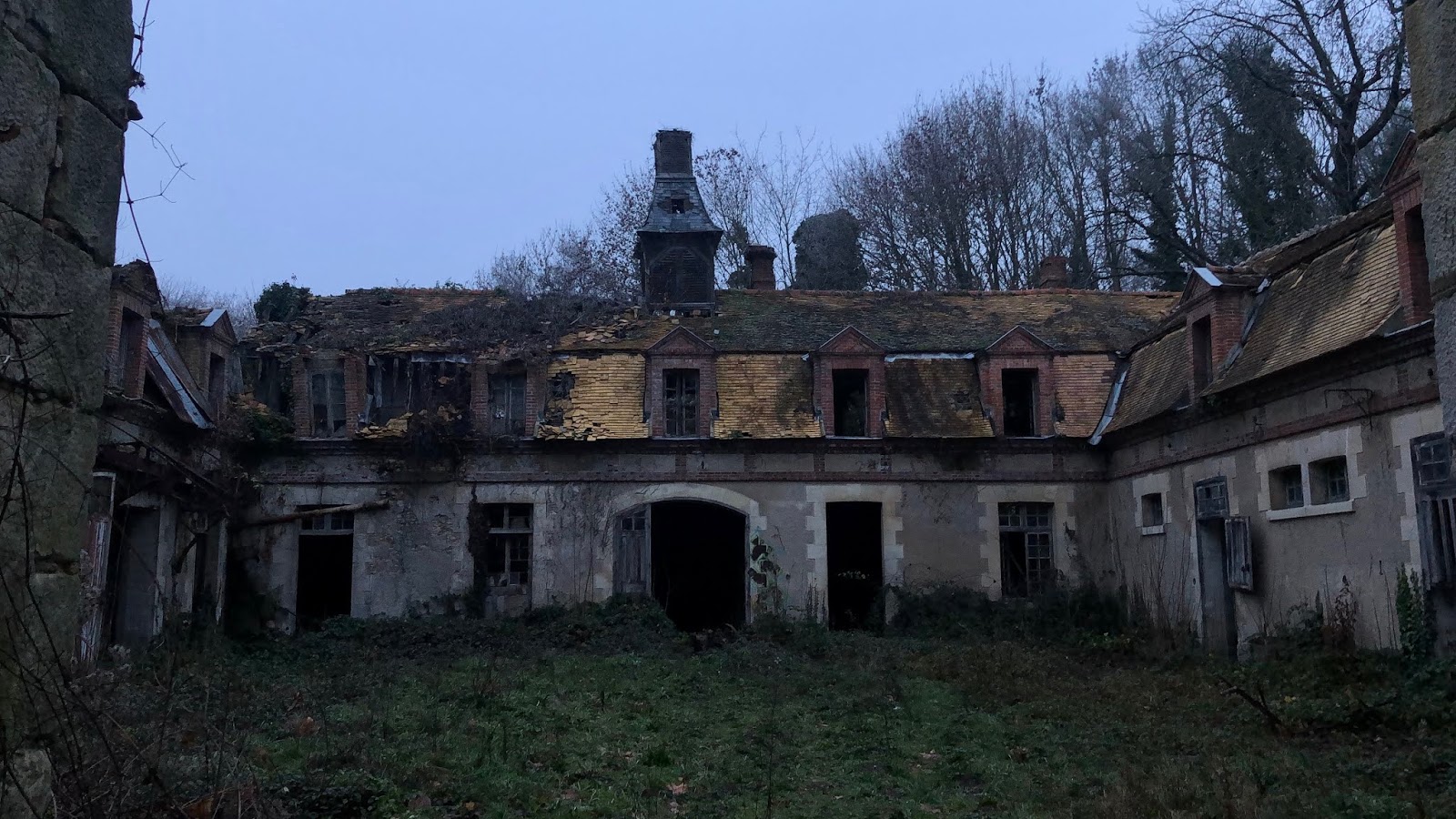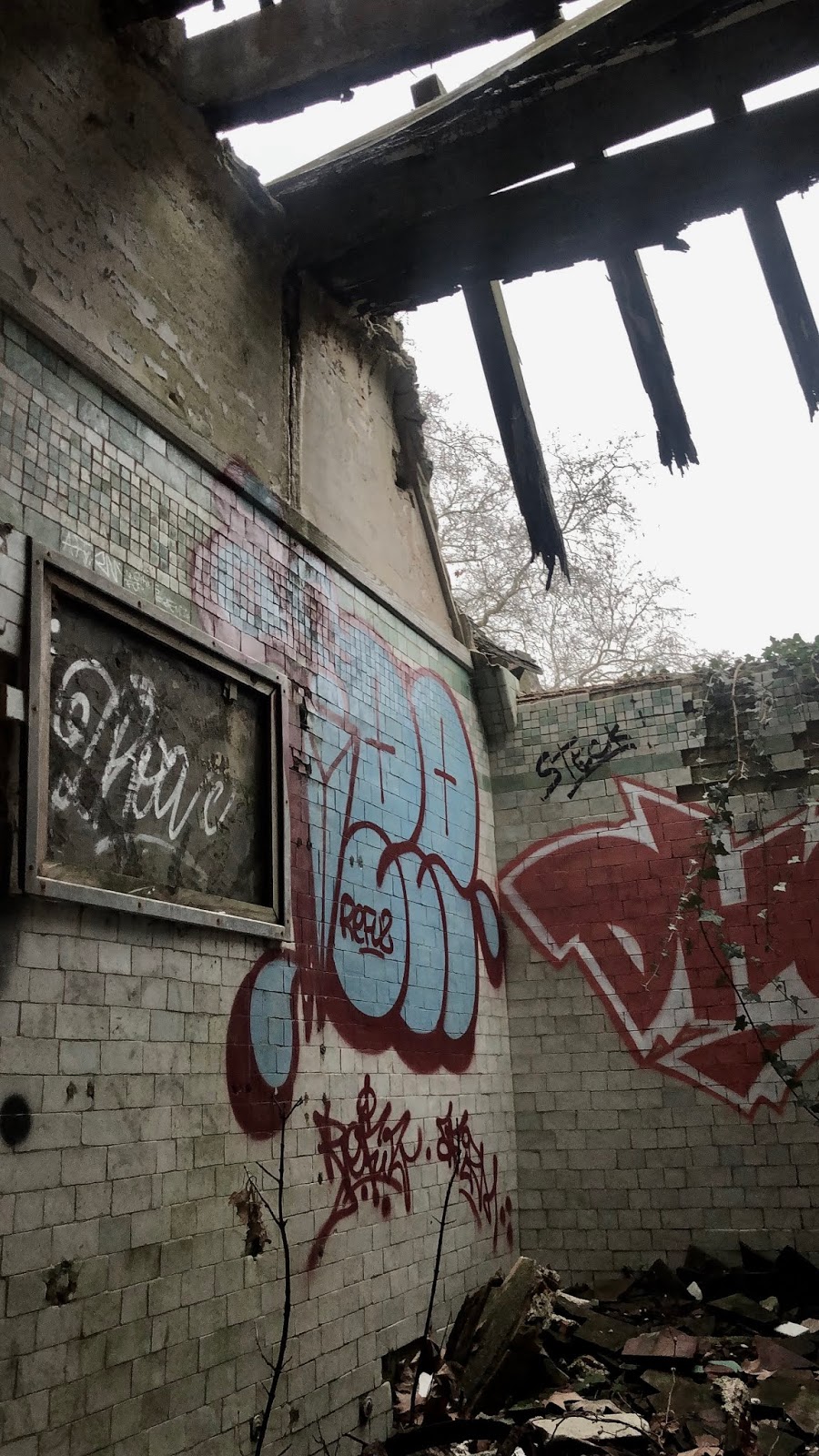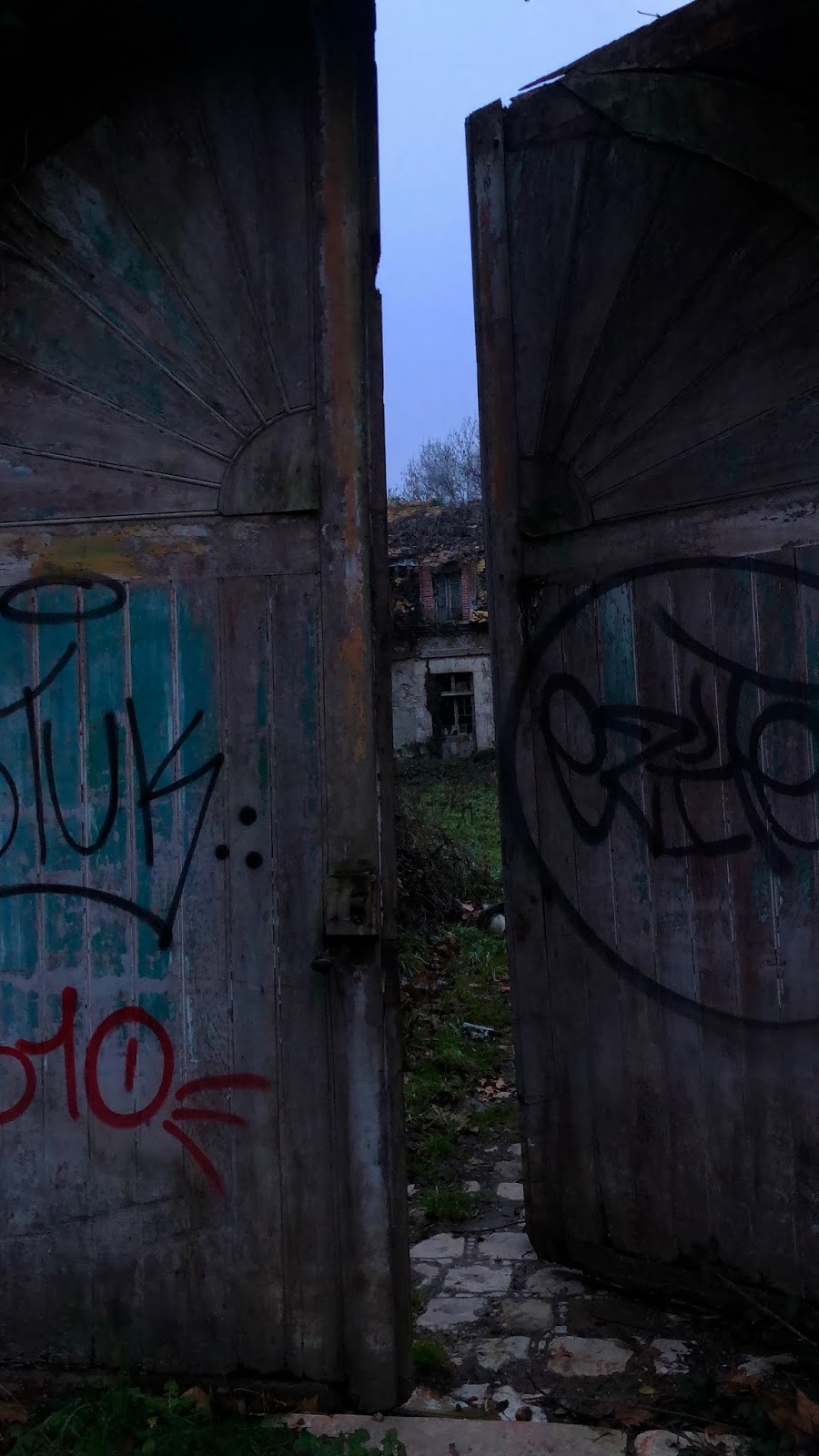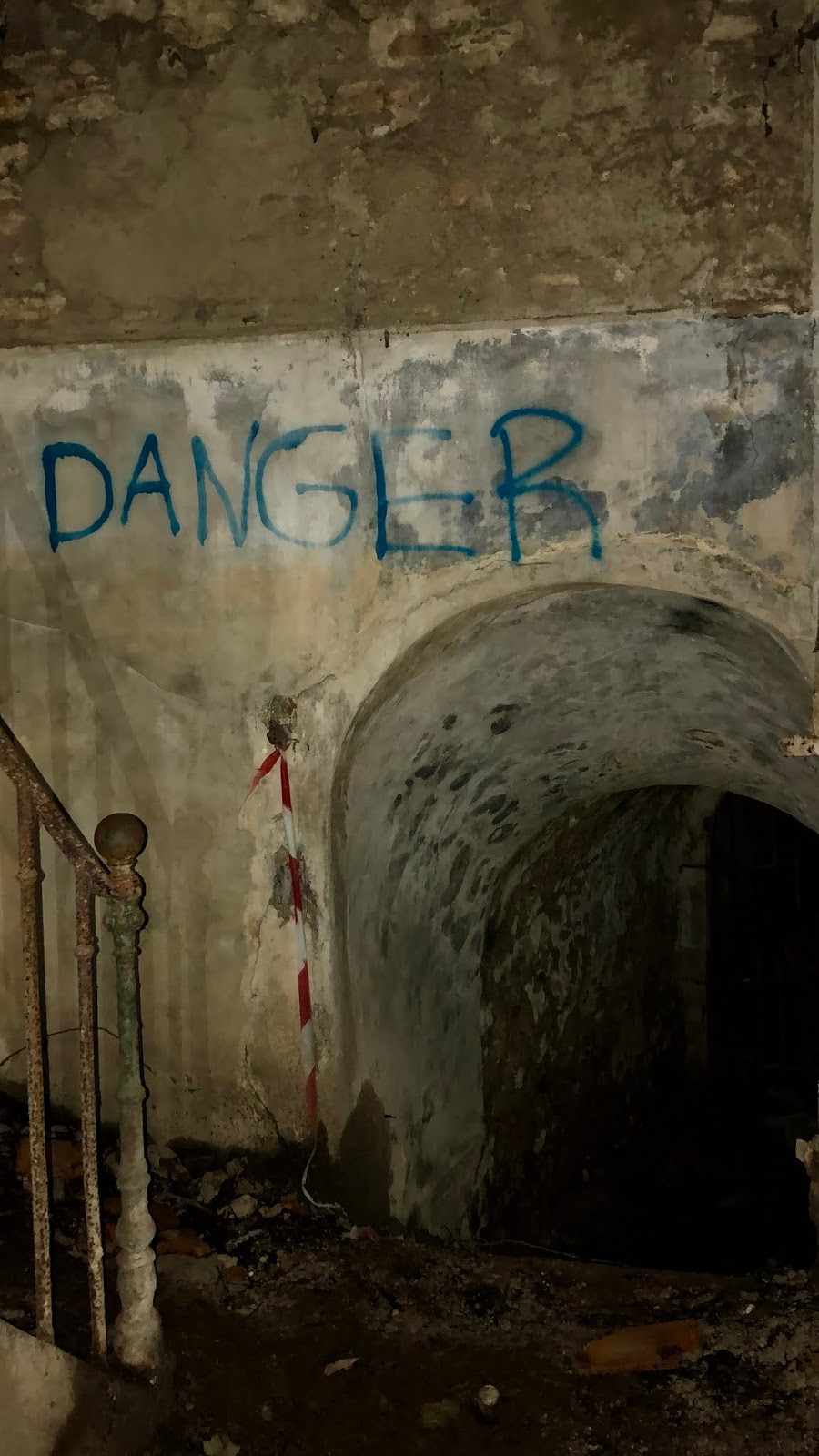Domain of the three columns
Today, I share with you my first experience of urban exploration, I was very excited about this idea, I was always fascinated by this kind of stuff.
So I started looking for addresses, lots of addresses, not far from home. I noticed that when we start finding addresses, whether they are difficult to find or not, it becomes very addictive, we always want to find more and it becomes like a game.
I found something like thirty addresses of places in a few days, castles, mansions, sanatoriums, hospitals, supermarkets, schools and even bunkers, all abandoned for years. I also learned from my research that several metro stations in Paris had been abandoned after the Second World War or had not finished being built. I find this extremely interesting, it's really something I would like to do soon but it does not look very easy to access and quite dangerous so I'll have to think about it.
So I started looking for addresses, lots of addresses, not far from home. I noticed that when we start finding addresses, whether they are difficult to find or not, it becomes very addictive, we always want to find more and it becomes like a game.
I found something like thirty addresses of places in a few days, castles, mansions, sanatoriums, hospitals, supermarkets, schools and even bunkers, all abandoned for years. I also learned from my research that several metro stations in Paris had been abandoned after the Second World War or had not finished being built. I find this extremely interesting, it's really something I would like to do soon but it does not look very easy to access and quite dangerous so I'll have to think about it.
This place I want to talk about today is the domain of the three columns.
I must say a big thank you to Urbex Sessions (https://urbexsession.com) thanks to their articles, I could find a lot of urbex addresses, they always leave some clues, read between the lines and do your research from images from google earth that are practically there for each spot.
We already know the area in which the spot is located, so we have to search the exact city by reseigning on the history of the place, once the city found, you must go on google earth to find the address with the geographical images provided, it's as simple as that.
But I must say that sometimes it is not as easy as I want you to believe, necessarily urbex addresses should not be provided to avoid the degradation of places.
Some places are more complicated to find than others, it depends on many things, sometimes we do not know the history of the place so it is difficult to find the right location, but you must be persevering.
One day, I was about to quit when I had spent two days looking for a spot, it had given me a hard time, but I kept searching for hours because I knew that I could do it, and I finally managed to find it, I was so happy with myself that I will enjoy it all the more the day I visit it. So do not give up if it seems a little too hard to find, believe me, you'll end up finding it.
I must say a big thank you to Urbex Sessions (https://urbexsession.com) thanks to their articles, I could find a lot of urbex addresses, they always leave some clues, read between the lines and do your research from images from google earth that are practically there for each spot.
We already know the area in which the spot is located, so we have to search the exact city by reseigning on the history of the place, once the city found, you must go on google earth to find the address with the geographical images provided, it's as simple as that.
But I must say that sometimes it is not as easy as I want you to believe, necessarily urbex addresses should not be provided to avoid the degradation of places.
Some places are more complicated to find than others, it depends on many things, sometimes we do not know the history of the place so it is difficult to find the right location, but you must be persevering.
One day, I was about to quit when I had spent two days looking for a spot, it had given me a hard time, but I kept searching for hours because I knew that I could do it, and I finally managed to find it, I was so happy with myself that I will enjoy it all the more the day I visit it. So do not give up if it seems a little too hard to find, believe me, you'll end up finding it.
Okay, now I'm going to tell you about the history of this place. This mansion is located in a small village not far from Paris and it was particularly easy to find I must say.
A plot of 50 hectares of heritage disused for now a decade.
Built at the beginning of the 20th century, the Anglo-Norman style mansion still stands the test of time.
On this vast estate, there is also a large pond where are the famous three columns, a stable, and another small castle, the Chateau Rose, built in 1815.
These 3 buildings are as dilapidated as each other but still visitable, but beware of the ceilings that threaten to collapse over time.
The main building consists of three floors and at the time had about fifteen rooms, it is quite large but almost ruined and covered with vegetation.
The estate had several owners including the Weisweiller family, people of Israelite origin who, during the Second World War, the arrival of the Nazis, lived the horror, the husband committed suicide at the manor at the arrival of the soldiers and his wife Betty was deported to Auschwitz without returning. Then, the house was occupied by the Nazis in 1940. The last owner was Gustave Leven, former boss of the drink Perrier, died in 2008. (Source : Urbex Sessions)
Much has happened in this house over the years, so we can imagine a lot of things about it.
We had to go back a second time, since we had not done the floor, the basement and the stable.
Honestly the state of the field is poor but it remains an incredible place, especially for a first exploration, it is particularly easy to access.
I think that if there was not all this street art on the walls, there is not much more to admire, it gives a little life to this place.
A plot of 50 hectares of heritage disused for now a decade.
Built at the beginning of the 20th century, the Anglo-Norman style mansion still stands the test of time.
On this vast estate, there is also a large pond where are the famous three columns, a stable, and another small castle, the Chateau Rose, built in 1815.
These 3 buildings are as dilapidated as each other but still visitable, but beware of the ceilings that threaten to collapse over time.
The main building consists of three floors and at the time had about fifteen rooms, it is quite large but almost ruined and covered with vegetation.
The estate had several owners including the Weisweiller family, people of Israelite origin who, during the Second World War, the arrival of the Nazis, lived the horror, the husband committed suicide at the manor at the arrival of the soldiers and his wife Betty was deported to Auschwitz without returning. Then, the house was occupied by the Nazis in 1940. The last owner was Gustave Leven, former boss of the drink Perrier, died in 2008. (Source : Urbex Sessions)
Much has happened in this house over the years, so we can imagine a lot of things about it.
We had to go back a second time, since we had not done the floor, the basement and the stable.
Honestly the state of the field is poor but it remains an incredible place, especially for a first exploration, it is particularly easy to access.
I think that if there was not all this street art on the walls, there is not much more to admire, it gives a little life to this place.
"Art is never finished, only abandoned."








































































Commentaires
Enregistrer un commentaire